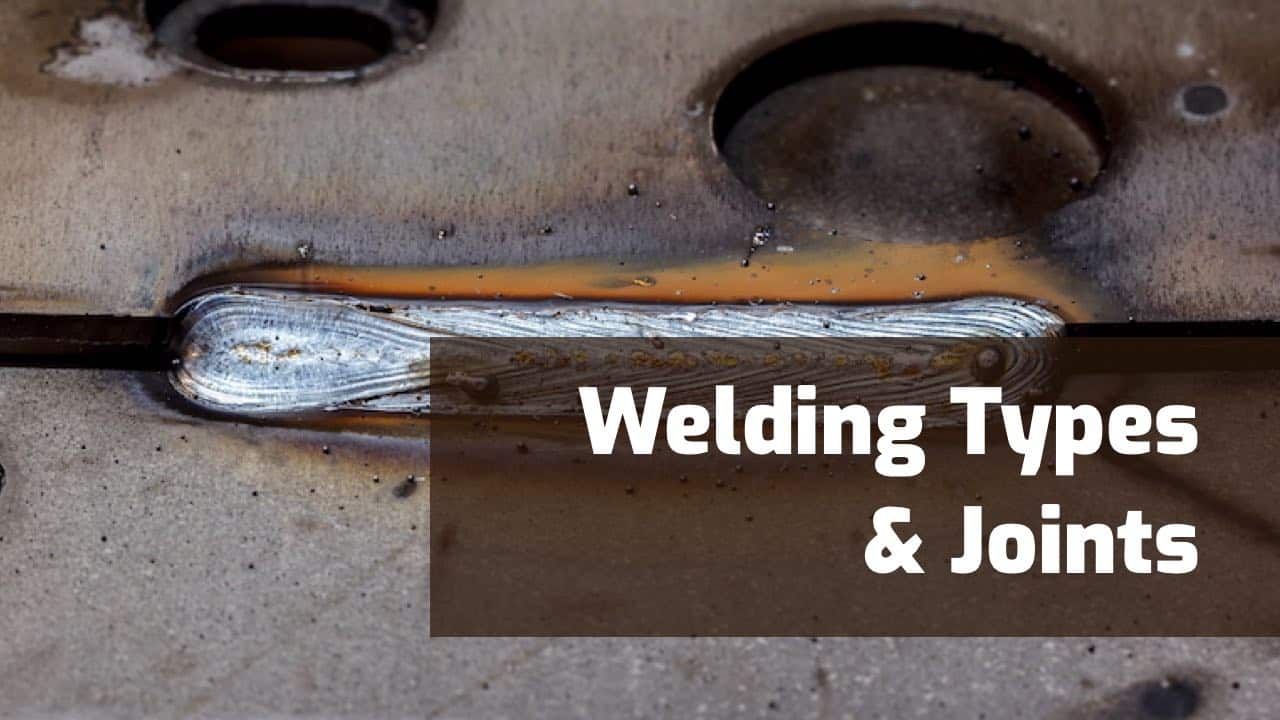Any discussion on weld types starts with the idea that it is important to distinguish between the joint and the weld.
Each must be described to completely describe the weld joint.
There are many different types of welds, which are best described by their shape when shown in cross section.
The most popular weld is the fillet weld, named after its cross-sectional shape.
Other types of welds include flange welds, plug welds, slot welds, seam welds, surfacing welds, and backing welds.
Joints are combined with welds to make weld joints.
Types of Joints
There are 5 main joints used in welding. These are:
- Butt joint
- Corner joint
- Edge joint
- Lap joint
- Tee joint
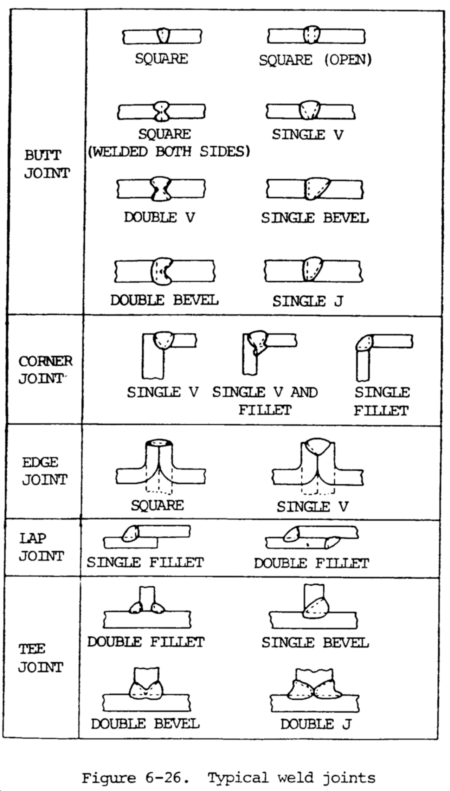
Types of Welds
Fillet Welds
A fillet weld joins two surfaces at an approximate right angle to each other. There are several types of fillet weld:
- Full fillet weld – is a weld where the size of the weld is the same as the thickness of the thinner object joined together.
- Staggered intermittent fillet weld – refers to two lines of intermittent welding on a joint. An example is a tee joint (see below) where the fillet increments that are in one line are staggered in comparison to the other line.
- Chain Intermittent fillet weld – refers to two lines of intermittent fillet welds in a lap joint or T where the welds in one line are approximately opposite those in the other line.
Other terms associated with fillet welds include:
- Boxing: which refers to the continuation of a fillet weld around a corner of a member. It is an extension of the principal weld.
- Convexity: Refers to the maximum perpendicular distance from the face of a convex fillet weld to a line joining the weld toes.
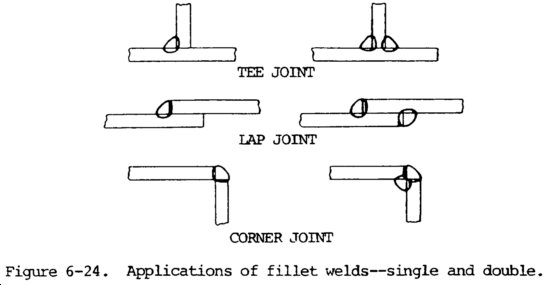
Groove Welds
The second most popular type of weld is the groove weld. There are seven basic types of groove welds, which are shown in figure 6-25.
The groove weld refers to beads that are deposited in a groove between two members to be joined.
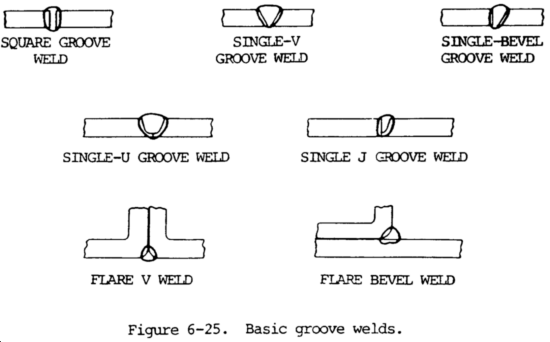
More examples are shown in figure 6-26 above.
The type of weld used will determine the manner in which the seam, joint, or surface is prepared.
See figure 6-27 for the standard types of groove welds.
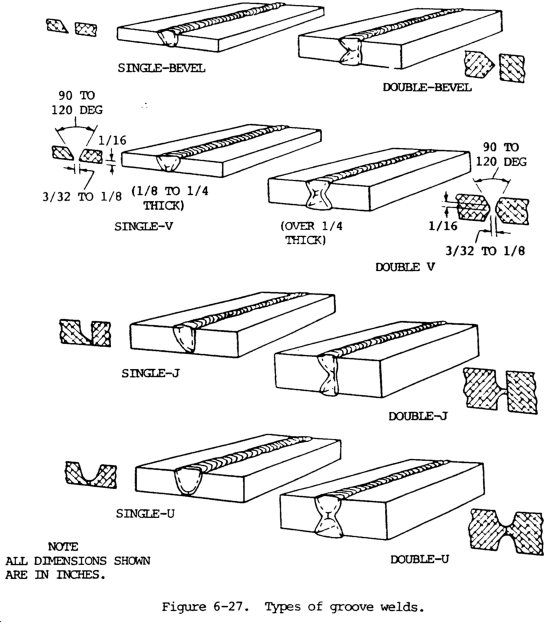
Surfacing Weld
These are welds composed of one or more strings or weave beads deposited on an unbroken surface to obtain desired properties or dimensions.
This type of weld is used to build up surfaces or replace metal on worn surfaces. It is also used with square butt joints.
See figure 6-28 below for examples.
Plug Weld
Plug welds are circular welds made through one member of a lap or tee joint joining that member to the other.
The weld may or may not be made through a hole in the first member; if a hole is used, the walls may or may not be parallel and the hole may be partially or completely filled with weld metal.
Such welds are often used in place of rivets.
NOTE: A fillet welded hole or a spot weld does not conform to this definition.
See figure 6-28 below for examples.
Slot Weld
This is a weld made in an elongated hole in one member of a lap or tee joint joining that member to the surface of the other member that is exposed through the hole.
This hole may be open at one end and may be partially or completely filled with weld metal.
NOTE: A fillet welded slot does not conform to this definition.
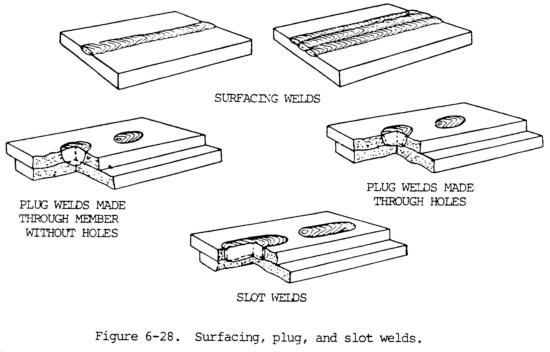
Flash Weld
Flash welding is referred to as a resistance welding process where fusion is produced over the entire abutting surface.
Heat is created by the resistance to the current flow between two surfaces and by the application of pressure after heating is mostly complete.
Flashing is accompanied by the expulsion of metal from the joint.
See Figure 6-29 below for an example of a flash weld.
Read more: Flash and Flange Weld Symbols
Seam Weld
A weld made by arc seam or resistance seam welding where the welding process is not specified.
This term infers resistance seam welding.
Refer to figure 6-29 below for an example of a seam weld.
Spot Weld
A spot weld is a weld made by arc spot or resistance spot welding where the welding process is not specified.
This term infers a resistance spot weld.
Read more: Spot Seam and Arc Weld Symbols
Upset Weld
An upset weld is a resistance welding process where fusion occurs progressively along a joint of over the entire abutting surface.
The application of pressure before heating is required and occurs during the heating period.
Heat comes from the resistance to the flow of electric current in the area of contact between the surfaces.
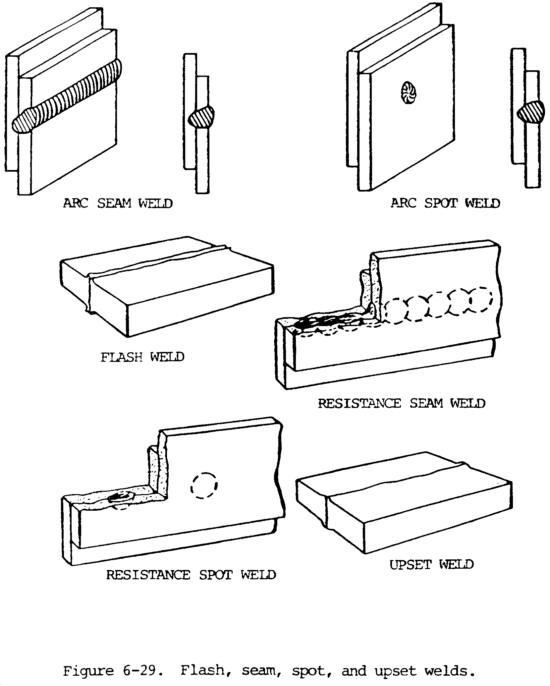
Welding Positions
Welding is often done on structures in the position in which they are found.
Techniques have been developed to allow welding in any position.
Some welding processes have all-position capabilities, while others may be used in only one or two positions.
All welding can be classified according to the position of the workpiece or the position of the welded joint on the plates or sections being welded.
There are four basic welding positions, which are illustrated in figures 6-30 and 6-31.
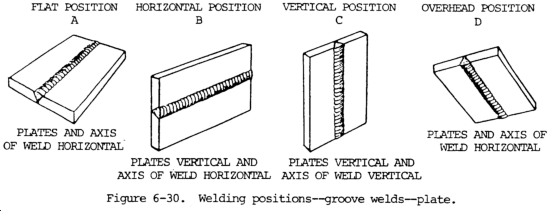
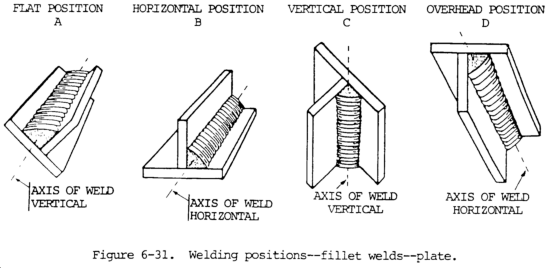
Read more about the different welding positions.
